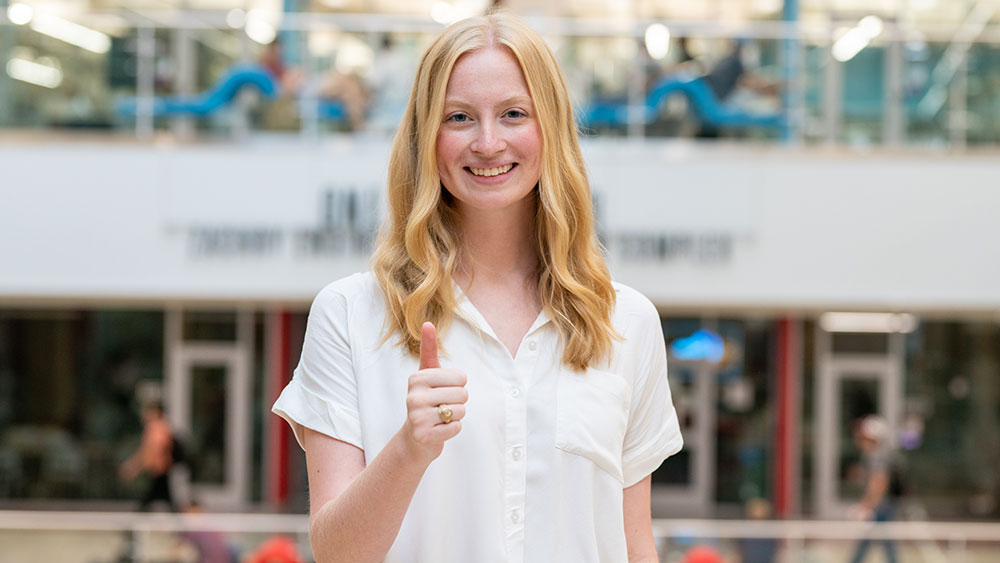
Erin Ingram, a junior in the Department of Electrical and Computer Engineering at Texas A&M University, found an enthusiasm for renewable energy and is pursuing a path toward a more sustainable future.
To begin this endeavor, she established her place within the Engineers for a Sustainable World program during her freshman year as a team lead for the Solar Charging Station team. For the past two years, the team has been working to implement a solar charging station outside of the Zachry Engineering Education Complex to charge students' phones using the sun. The team is comprised of 10 engineering students from different disciplines, including electrical engineering and mechanical engineering. This multidisciplinary project is currently funded by the Aggie Green Fund and is in the development stage.
“I noticed that there wasn't any renewable energy to be seen on campus, and that’s something I’m really passionate about,” Ingram said. “I wanted to create something that would allow engineering students to interact with sustainable energy, see that it’s reliable and maybe become inspired to pursue it in their career.”
She is also currently pursuing undergraduate research in the Stored Ion and Bio Optics Research Laboratory under Dr. Hans Schuessler, professor in the Department of Physics and Astronomy at Texas A&M. There, Ingram is working on an atmospheric spectroscopy system aimed at detecting dangerous hydrofluoric acid leaks in industrial production plants for batteries, microelectronics, DNA-sequencing reagents and more.
“This semester I've developed from scratch a handheld device, similar to a gaming controller, that controls the movement of our telescope’s motor, which is a pivotal part of reading data. This technology has applications outside of hydrofluoric acid leaks, such as measuring greenhouse gas levels or other pollutants in the atmosphere,” she said.
Though Ingram is excited to now contribute to the role of electrical engineers in the future of climate change mitigation and sustainability, she started out in the Zachry Department of Civil and Environmental Engineering. It wasn’t until her second internship with Freese and Nichols, an engineering design firm specializing in water resources infrastructure, that she realized electrical engineering was the path for her.
I wanted to create something that would allow engineering students to interact with sustainable energy, see that it’s reliable and maybe become inspired to pursue it in their career.
Ingram has completed three internships thus far and will also be interning with ExxonMobil this summer, where she will gain hands-on experience with power systems. She hopes to become involved in their growing carbon capture and storage initiatives.
Looking ahead, Ingram hopes to pursue a career in renewable energy research and development, but she is also interested in furthering her education in electrical engineering before she dives into the field full time.